
Network Research (2011, 75MB, 2:11 min)
See Monday’s post.

Flow Spot Test #5 (2011, 57MB, 2:03 min)
“Just having my early afternoon session of Body-Work with
Nnah, my Body-Designer.”
Says ANW, of the FlowSpot Tests:
For a large-scale exhibition at the School of the Art Institute of Chicago
I created a color coordinated airport/hotel/mall/bank/spa/biennial lounge to
offer a site of relaxation and bodily engagement in an exhibition dominated
by isolated, sellable art objects.
All lounge products were purchased through online transactions (mostly
Target and Walmart), and were returned at the end of the exhibition.
My dystopic science fiction news video Global Countdown played on
a 55” flat panel monitor.
On opening night, visitors to FlowSpot could register for massages from
licensed massage therapists. While participants received massages they
could not see anything and listened to my directors commentary of the
Global Countdown video. The commentary consists of very basic visual
descriptions, with the goal being that the person receiving the massage
can visualize the video in their minds.
Throughout the duration of the exhibition, I used the lounge as a science
fiction video set to make “FlowSpot Tests.” In these videos I engaged
with the lounge both conceptually and materially in a color coordinated
outfit.
Contact me if you are interested in opening a FlowSpot in your airport,
hotel, mall, bank, spa, biennial, gallery, cultural center, or any other
space that you own/lease/use.
See also.
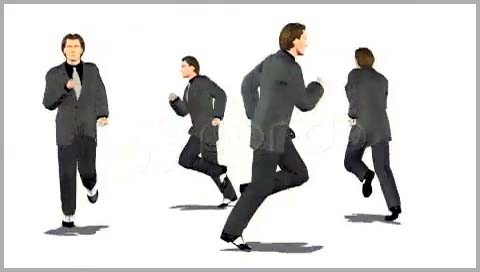
Anxiety About Relationships Between Friendship and Business (2011, 11MB, 2:41 min)
I’m so taken with Andrew Norman Wilson’s work I’m going to devote
the whole first week of this DVblog season to it.
He initially sent us a longish piece, Networking with Andrew Norman Wilson
made with Nicholas O’Brien of Bad At Sports.
It’s wonderful but pretty huge so you should definitely go and
look at the Vimeo version there.
On Monday, Weds and Friday of this week we’ll post smaller
pieces extracted from that (but without the commentary or
‘interview’ as it is styled elsewhere [-the text on the BAS page linked above]) ,
On Tuesday and Thursday we’ll post two of Wilson’s FlowSpot Tests
with some accompanying explanation from him.
I find this work in general very exciting because it does a lot
of interesting, nuanced and often rather funny (and I’m in favour of funny –
there are very few great works of art which contain no funny at all)
and intially apparently contradictory things.
Let me give you my take on it.
The Webinars are all composed entirely of footage sourced from Pond5
“the worlds stock media marketplace” . The FlowSpot Tests are performative
pieces involving bizarre consumer items sourced from e-bay and wallmart and
deployed in a 21st Century updating of silent movie Lloyd-Keaton-Chaplin
deadpan involving, too, a certain degree of slapstick
and displaying a deliciously calibrated sense of the ridiculous.
The Webinars (a least when one takes account of their titles and certainly viewed
in the light of the commentary from “networking”) are a kind of consumerist
reductio-ad-absurdam.
The intent is celarly in some sense satirical but the pieces take risks in
that they don’t stop and end in critique – there is an understanding of
how toxically compelling some of this imagery is and to some extent they
toy with celebrating this.
Wilson is clearly a natural movie maker. He doesn’t restrain himself from
visual flourishes and jokes which are by no means integral to any
satirical case but make the pieces more fun to watch.
(The distortion effects applied to objects in the periphery of the
action in FlowSpot Test #5 are a case in point.)
Additionally, and most impressively, there is a muddying of the
waters in Networking… (and by implication the
Webinars and FlowSpot Tests) whereby
cogent and apparently straightforward philosophising is allowed
to cross pollinate/contaminate with the satire and vice versa,
leaving the viewer with -ahem- work to do.
This work is not glib; it takes risks – in order to maintain its
high level potency it risks misunderstanding.
A look at Wilson’s CV shows a spell spent working for a
labour union and I read the impulse behind these pieces
as radically anti-commodification and corporate mind rot.
Agit-prop, thankfully, it’s not, but “something rich and strange”
– radical art for interesting times to come.
Nice to see this when so many younger artists seem to be
tempted by a career orientated and somewhat cynical celebration
of that same deadend emptiness.
Joan Brossa, the Catalan poet, artist, performer and polymath,
who died in 1998, deserves to be more widely
known in the rest of the world.
I’ve often thought his work, in particular the visual
poems, prefigured much of the art of the early days
of the net (but mostly better: terser, wittier, riskier –
I think Brossa would have loved the net).
This elegant & delightful performance ( ‘Fi’ is Catalan
for ‘End’, in this context The End) was recorded
in Barcelona eight months before his death.
It requires a little patience; the reward being that
it can be viewed many more than one time, so it
seems like an appropriate thing to leave you with
over the summer.
Remember we’re always delighted to look at new work,
so if you’re making moving image yourself,
or you happen across great stuff don’t hesitate
to send us links.
We’re back on Monday, September the 26th – in
the meantime we wish you all a happy and relaxing summer.
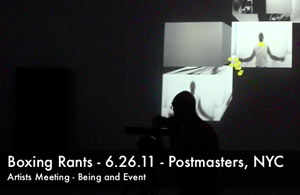
Boxing Rants (2011, 28 MB, 3:11 min)
Documentation of an interactive video performance by
G.H. Hovagimyan that took place at Postmasters Gallery in NY,
from a series of performances titled ‘Being and Event’.
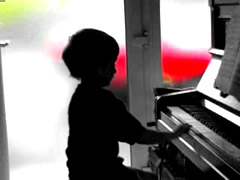
Arms Race (2007, 1.85MB, 1:02 min)

Handbag Surveillance (2007, 4.18MB, 2:05 min)
Anyone lucky enough to have already encountered Jess Loseby’s artwork
online or in a gallery will have realised immediately what a thoughtful,
courageous & dextrous artist she is. She hasn’t been so active of late &
her excellent site is offline now due to her continuing ill health
(although it is possible to explore it somewhat using the wayback machine).
This is a real loss: there is a warmth & humanity to her work
– an ability to find beauty in the ordinary, the overlooked
( & in our still sexist society, these categories often overlapping
with the domestic, the feminine) – which one often looks for in vain elsewhere.
Her work doesn’t strut, it enchants, (& then maybe sticks a
big fuck-off hatpin into you).
Video making isn’t central to what she does, but when she does it
she does it with all the qualities noted above.
Enjoy & learn.
Music for Handbag Surveillance by Clive Loseby.
We at DVblog join with many of her friends in wishing Jess well
and look forward to her return to active art making.

Native Dancer (2011, 92MB, 2:08 min)
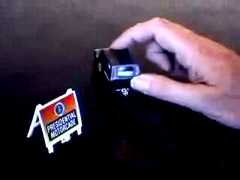
Genbush (2006, 17MB, 6:03 min)
Two pieces from Alan Sondheim -one we originally posted in 2006
and one very recent. The new piece –Native Dancer –
is a particularly affecting example of recent motion capture/avatar work.
It properly forms part of a triptych but I think it is the outstanding of the
three and I’m going to exercise curatorial perogative & post it singly.
It enchants me -I don’t know exactly why, I think the reasons could be
quite banal -there’s something of the children’s TV sci-fi epic about it perhaps…
Don’t know, just love it.
And here’s what we originally said about the other piece, which I see no reason to change:
Humor is perhaps not a quality that springs immediately
to mind when discussing the work of Alan Sondheim.
Wrong! His work is saturated in it, often a species of
graveyard or gallows wit.
Here, though, he just lets loose, plays.
But the man is incapable of doing anything that doesn’t
resonate with layer upon layer of meaning too!
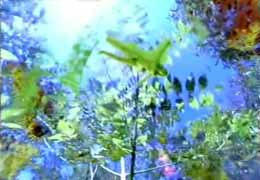
I Want To See How You See (2003, 55.2MB, 4:48 min)
Hallucinatory, luscious, with a hint of darkness: approaching the
formulaic but, if so, certainly a winning formula for Rist & as
always undoubtedly beautifully & imaginatively wrought,
a video portrait of the writer & curator Cornelia Providoli,
found on the consistently excellent Lumen Eclipse site.
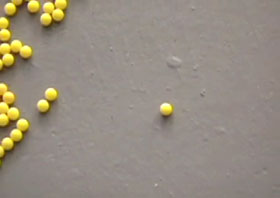
Monument (2006, 3MB, 1:53 min)
Monument, a computer program continuously scans the headlines
of 4,500 English-language news sources around the world, looking
for people who have been reported killed. Each time it finds an article,
an algorithm determines the number of deaths, and instructs a ceiling-mounted
mechanism built from Legos to drop one yellow BB per person.
by Caleb Larsen.
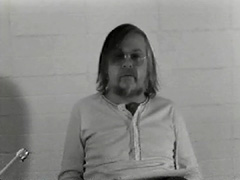
Baldessari Sings LeWitt (excerpt) (1972, 30.5MB, 3:38 min)
In which John Baldessari sings Sol LeWitt’s
sentences on conceptual art.
From the indispensible Ubuweb.